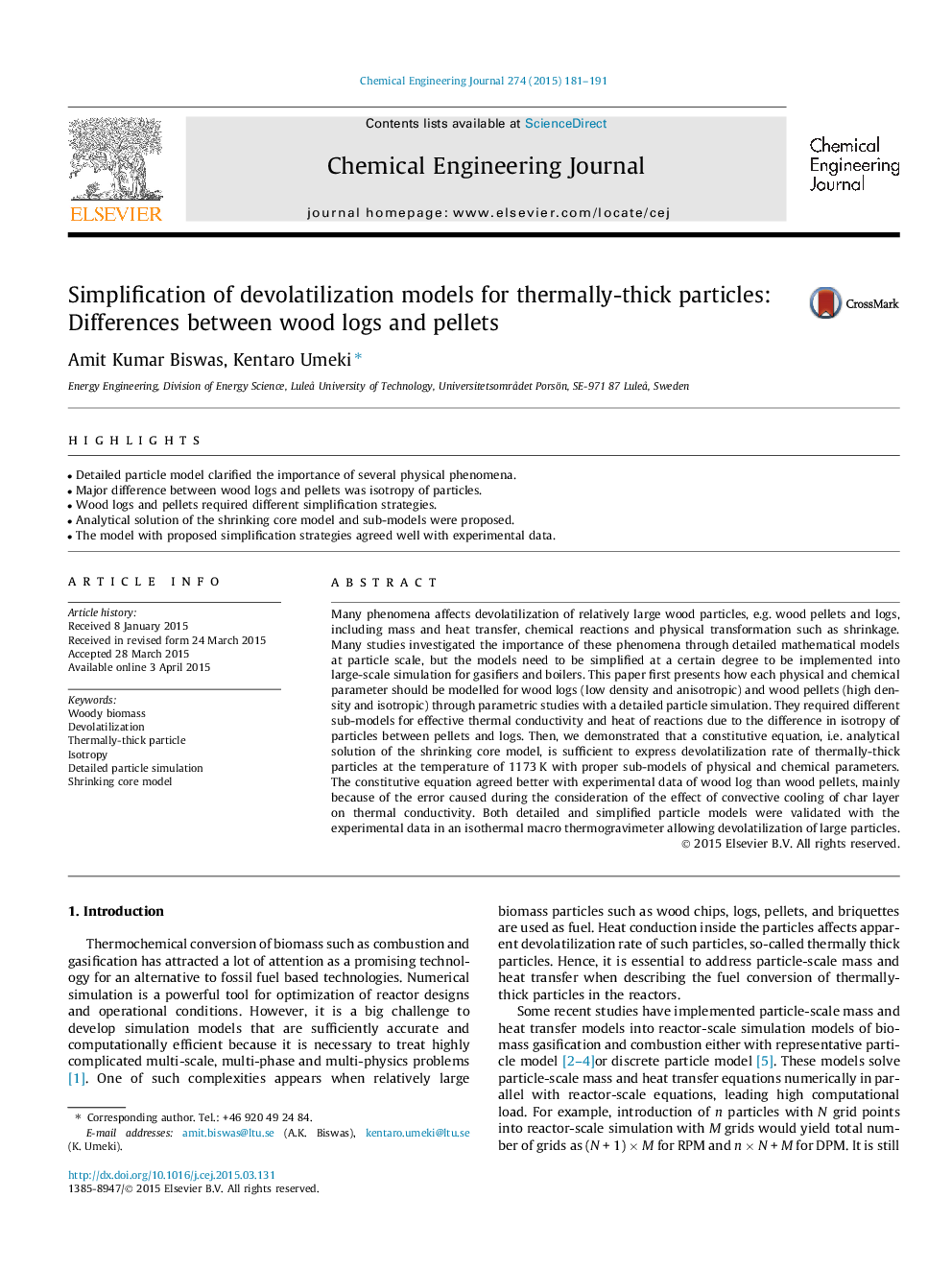| کد مقاله | کد نشریه | سال انتشار | مقاله انگلیسی | نسخه تمام متن |
|---|---|---|---|---|
| 146404 | 456369 | 2015 | 11 صفحه PDF | دانلود رایگان |
• Detailed particle model clarified the importance of several physical phenomena.
• Major difference between wood logs and pellets was isotropy of particles.
• Wood logs and pellets required different simplification strategies.
• Analytical solution of the shrinking core model and sub-models were proposed.
• The model with proposed simplification strategies agreed well with experimental data.
Many phenomena affects devolatilization of relatively large wood particles, e.g. wood pellets and logs, including mass and heat transfer, chemical reactions and physical transformation such as shrinkage. Many studies investigated the importance of these phenomena through detailed mathematical models at particle scale, but the models need to be simplified at a certain degree to be implemented into large-scale simulation for gasifiers and boilers. This paper first presents how each physical and chemical parameter should be modelled for wood logs (low density and anisotropic) and wood pellets (high density and isotropic) through parametric studies with a detailed particle simulation. They required different sub-models for effective thermal conductivity and heat of reactions due to the difference in isotropy of particles between pellets and logs. Then, we demonstrated that a constitutive equation, i.e. analytical solution of the shrinking core model, is sufficient to express devolatilization rate of thermally-thick particles at the temperature of 1173 K with proper sub-models of physical and chemical parameters. The constitutive equation agreed better with experimental data of wood log than wood pellets, mainly because of the error caused during the consideration of the effect of convective cooling of char layer on thermal conductivity. Both detailed and simplified particle models were validated with the experimental data in an isothermal macro thermogravimeter allowing devolatilization of large particles.
Journal: Chemical Engineering Journal - Volume 274, 15 August 2015, Pages 181–191
